-
Posts
908 -
Joined
-
Last visited
Posts posted by Perry Paolantonio
-
-
-
-
2 minutes ago, Daniel D. Teoli Jr. said:
Did they use a fan for cooling?
Most of these machines require serious ventilation - the northlight uses a 4" clothes dryer exhaust port, and will overheat if you don't get the hot air away from the machine. The Spirit is more intense, I think.
-
Just now, Daniel D. Teoli Jr. said:
If they use propriety bulbs and they go out of biz and you will be shopping on eBay for used bulb from Ukraine.
you can buy them on Amazon. nothing special.
-
5 minutes ago, Tyler Purcell said:
Oh interesting, I thought you could use alcohol in pert machines as an alternative. So can you slow down your machine to actually get some of the real deep grime off? I'm interested because I have the same problem you do, can't run chemicals here.
it doesn't work like that. Yes, you can slow it down, but there's not a tank of alcohol that the film goes through. In the ultrasonic machines, a set of rollers lowers down into a bath of the solvent, and the ultrasonic agitators are in that tank as well. So the idea is that the solvent loosens the stuff, and the vibration from the ultrasonic agitator basically shakes it off the film.
In the Excel 1100, film only passes through 4 wet rollers, which are saturated in isopropyl, then 4 dry rollers, then a drying box. There is a storage tank under the machine that holds the liquid and it's fed to the wet rollers using peristaltic pumps (like the kind used to pump medication into an IV drip), and that saturates them.
I don't believe you can use alcohol in Perc machines, but I could be wrong. Some of the perc machines can be modified to take HFE, but that stuff is super expensive and it evaporates insanely fast. Kodak's machine uses HFE, but instead of a bath it sprays it on the film. HFE is safe to use in office environments, but it's wicked expensive.
-
Just now, Tyler Purcell said:
Do you have an ultrasonic machine? I haven't seen alcohol and ultrasonic and didn't know how well it worked. All of the guys here I use for cleaning use pert and ultrasonic.
none of the alcohol machines are full immersion, so no ultrasonic. I don't think Alcohol has the strength to dissolve the really gunked on stuff that perc can get, at least not as quickly as perc, so there's not much point in adding the ultrasonic vibration to the mix.
-
5 minutes ago, Todd Ruel said:
Thanks, Perry. I'll compromise. I'll try to bolt on this Film-O-Clean device, but I'll stay away from FilmGuard.
If you have a special case, like, say, the film is coated with nicotine, would you still use isopropyl, or is there something better? (I have run into a few nicotine-stained prints in my time, especially if a home movie came from a smoker's house.)
My parents were smokers for a long time, so I'd recognize the smell of stale cigarette smoke anywhere. There's some Super 8 footage of me in a carriage at 3 months old with a foot-long candy cane in my mouth at a christmas party. You can see the smoke line about 2 feet above my head. ahh, the 70s.
To be honest, I can't recall coming across that, but I don't do the film cleaning and scanning so much myself these days. That said, I would imagine it would be pretty effective at cleaning that. The main thing, with any hand cleaning - ecco or pec pads - is to be constantly using clean parts of the pad. As soon as it starts to look dirty, fold it over and use a fresh section. Smoke should leave a pretty nasty residue on the pad, and require a lot of cleaning media!
*most* of the home movies we see are in metal or plastic cans or were stored in latched film boxes, so probably had limited exposure to smoke. I'd imagine.
-
 1
1
-
-
19 minutes ago, Todd Ruel said:
Perry, what’s been your best solution for cleaning film (Lipsner-Smith/perc excluded)?
We primarily use 99.99% isopropyl. That's in our Lipsner Smith, and for hand cleaning with Pec Pads, or on an Ecco cleaner. It works well for most film. The most common thing we see, primarily with home movies, is residue from tenite reels - those grey plastic ones that often leave a talc-like coating on the film. Alcohol does a good job of cleaning off most dirt and dust. Doesn't get the really caked on stuff on a single pass, or thick adhesive residue, unless you stop and work at it carefully with a swab, but it does a decent job.
We're not a wet lab, so we don't really use any harsh solvents. We're not set up with the proper ventilation and that stuff is just cancer in a bottle if you're not clearing the air fast enough. It's not worth our employees health to deal with that.
People seem to like Solvon II, which Urbanski sells. We used it a bit in the past and it does a nice job, but you need the right respirator, gloves and ventilation or it's pretty nasty.
-
 1
1
-
-
-
FWIW, we clean any films known to have Film Guard applied to it to remove it before scanning. That stuff makes a mess of PTR rollers, and the capstan on our ScanStation is permanently stained from it. We have seen films with this stuff leave a gunky residue on the rollers that required manual cleaning of everything after each roll.
Not a fan.
(an aside: @Phil Rhodes: I've been reading HHGTTG to my 7 year old at night before bedtime. We just got to the quote from Marvin in your sig last night. He was most amused.)
-
Just now, Robino Jones said:
Interesting to know that light pipes are used (..or were) in scanner's backlight systems. I almost bought one from Edmund optics a few years ago but it was too small diameter - would not have been covering enough for 35mm. How big is the lightpipe and are there other lenses involved in the design ? Just curious - not thinking of using this idea.. my scanner LED system is really fine.
I took that apart quite a while ago. If I recall, though, there was a box with the bulb and three filters, each one actuated with either a small stepper motor or a solenoid. I can't remember which and I never took pictures of that. In any case, the light was installed inside a reflective chamber, and the light pipe was attached at the top. In the attached color image, from the manual, you can see the end of the lightpipe at the top of the enclosure, in the bottom image. The filters are off to the side, and are move into position between lamp and fiber optics as needed.
In the B/W picture you can see the area behind the gate. This was under a flip-up door, which you had to lift in order to change the gate, and this exposed the other end of the light pipe (the black rectangular box). Basically, this was a narrow rectangle of light, a bit wider than the line array below the scanner. It was mounted to a stepper-motor driven linear slide, which moved it in parallel with the line array. Between the lightpipe and the film is a curved piece of diffusion material.
In this scanner, the film stays still, and the line array in the belly of the machine and the light source behind the film, both sweep past the frame together. It's kind of insane, really. Everything about this machine was ridiculous. You had to wait an hour before you could scan to let the lamp stabilize (don't forget it only has a 150 hour lifespan!), and it actually had a timer built in to block it from accepting commands until that hour had passed. It took 30+ seconds per frame to scan, and it had mainframe-style boards, one for each color, to do the processing. But, it was from the 90s...
So yeah, that lightpipe is best used as a desk lamp at this stage...
-
 1
1
-
-
On 1/10/2022 at 1:31 PM, Robert Houllahan said:
The "newer" Imagica ImagerXE had a Xenon lamp and a (I assume hella expensive) large fibre optic tube to send the light to the gate from the bulb.
I have a 24" light pipe from the 3000V, which I would imagine is pretty similar. Been meaning to turn it into an LED desk lamp. It'd be pretty cool looking: round on the lamp end (1" diameter), and a rectangle on the film end, something like 3/8" x 2"
-
 1
1
-
-
3 hours ago, Robert Houllahan said:
I do not think the any LaserGraphics scanner is equipped with a liquid gate from the factory.
That's correct. Lasergraphics does not make a wet gate.
-
Well, the Imagica 3000V (Admittedly an ancient machine) used a 24V 250W Halogen lamp and a series of mechanically actuated filters. The lifespan of that lamp was 150 hours. At the speed it scanned (30 seconds per frame), you probably had to go through 2 lamps for a feature! ...though it wasn't really intended to be a feature film scanner, more for discreet VFX shots and early DI work.
I think the next version, the Imager XE, may have used a similar setup though, but I'm not 100% positive on that. @Robert Houllahan would know as he had one for a while.
-
 1
1
-
-
2 hours ago, Phil Rhodes said:
Sure, but you can mount the light somewhere away from the film. It'll necessarily be somewhat distant anyway, given the need for a variable RGB colour filtration box. That's how it was always done.
You don't necessarily need the filtration if you choose LEDs with the right spectral characteristics. Any variance from the target peak wavelengths can be compensated for in the color processing pipeline (in scanner, before anything is written to disk). This is how almost all of the high end scanners work these days.
Incandescents also tend to dim over time. For example, the lamp in a Northlight has to be periodically replaced (every 1000 hours they say) because it will eventually dim to about 50% of its initial brightness. It gets to the point where the scanner can't compensate for the shift, in software. LEDs tend to be more stable over longer periods of time. Lasergraphics, for example, states an estimated 100,000 hour lifetime for their LED lamphouse.
Without the need for all that filtration, you can make a much more compact lamphouse, too. Essentially, some LEDs pointed into an integrating sphere. That doesn't take up much space, so it brings down manufacturing complexity and cost.
-
 1
1
-
-
6 hours ago, Andrew Wise said:
I don't have a film cleaning machine, nor have I ever used one, but i was under the impression the buffers (i suspect paint rollers) rotate while being sprayed with fresh solvent to allow the dirt to fling off.
They do not fling it off. The dirt is basically absorbed down into the saturated roller. On a machine like the Lipsner Smith Excel 1100, one set of 4 rollers is wet, saturated with isopropyl alcohol, and they spin in the opposite direction of the film. this minimizes the contact with the film, to prevent scratching. The second set of rollers are dry and they're at the beginning the drying process, before the film goes through an air knife that completely evaporates any remaining alcohol.
The rollers do get dirty and need to be washed, but unless they're really bad, they do not scratch the film. We have several complete sets for our film cleaner, so we always have at least a few at the ready and we change the rollers as soon as we see they're dirty.
The rollers on the HDS+ will also get dirty if you feed dirty film through it. Alcohol is a common cleaning agent for film. If there is dirt on the film, and the rollers are touching the film. the alcohol will dissolve some of the stuff on that film and will lift that dirt off. It will eventually build up on the rollers. The nap on those rollers on the HDS is very small, and with a very small diameter, there's not much surface area either. There's not a lot of place for the dirt to go, so I would imagine that on a dirty film they'd get pretty dirty, pretty quickly, unless they're not really touching the film much (in which case, see Rob Houllahan's post above about the level of coverage of the solvent on the film).
Triacetate film has a refractive index of 1.48, almost the same as Perc, but pretty far from Alcohol.
I'm not doubting that the alcohol based system on the HDS does nothing at all, it clearly does something. But there's a reason "old fashioned machines" used the solvents they do.
-
8 hours ago, Dan Baxter said:
My friend's Archivist has both 6.5K and HDR. As it has a fixed camera you only get 6.5K for 16mm not 8mm, and doing that locks you into scanning at a maximum speed of 15fps in SDR for 16mm so like I said the trade-off is you can't do high-speed scanning you can only do 15fps or slower for 16mm.
As I said, the initial specs were in flux when this machine came out. It's very possible there are some one-offs out there with special features.
7 hours ago, Dan Baxter said:I doubt what he's telling you, not that he told you that.
Ok. that's fine if you don't want to believe it.
But just for reference, because you brought it up ("ScanStation Personals do not have the HDR option available"): there was no technical reason why HDR couldn't have been added to the SSP. It was a business decision. Enabling HDR is purely a software licensing thing.
The 6.5k camera is a different issue on those machines because that requires engineering work. Of course the camera *can* be changed on them, but that's not how they're sold. Maybe in the future they'll offer a version with higher resolution cameras.
My whole argument here is not that you keep saying the Archivist is a crippled ScanStation. It's actually quite a capable machine for what it is. But it's a different machine, both physically and in how it's configured and sold. Yes, there are *some* models out there from the beginning that are probably a bit different, from before they tweaked the configurations (perhaps they were worried about poaching sales of their more expensive scanners, and made those changes, I don't know).
7 hours ago, Dan Baxter said:There is a way to make it technically incapable of HDR and that's if they put in a lower-intensity light. If it can't flash bright enough for HDR then it won't be able to do it software license or not, so that's an outside possibility that they may have changed the light. That wouldn't prevent them putting in the brighter light though for customers asking for it.
No, that's not how HDR in the ScanStation works.
Again, i'm not saying they *can't* make that a possibility (and the fact that some early machines may have it is evidence of that), I'm saying that they have chosen not to to differentiate the models. But other features, like cameras, optical readers and other physical differences are what makes them different machines.
-
26 minutes ago, Dan Baxter said:
Gencom is the regional sales agent, that is a primary source. Steve Klenk doesn't even have the Archivist on his website.
Galileo Digital is the worldwide reseller. I believe they work with local sales agents which is probably why the prices you're seeing there are higher - the local agent is marking it up, maybe? This is no different than the VARs who used to sell editing systems like Avid or Media 100, back in the day. They provide you with additional services like local support, training, and system configuration.
26 minutes ago, Dan Baxter said:You can do the same with the Archivist. Chrome rollers, gate options, warped-film kits, magnetic audio heads, etc. The Scanstation Personal also had options: optical sound reader, chrome rollers, magnetic sound heads, failed splice recovery software license, gate options. It's was as "modular" as anything.
The "modules" that make the ScanStation modular are the big things, like the camera and optical track reader, and future features that haven't come out yet. They are Upgrades. There are some options on the Archivist and the SSP, but you cannot, for example, upgrade an Archivist to do 6.5k and HDR. Not only don't they sell it that way, but there appear to be physical differences between the machines that would prevent things like module swaps, even though the scanners have the same basic form factor.
The archivist has a different film path, different gates, a different camera assembly. I bet you can't just plug a ScanStation camera module onto an Archivist base. If you overlay the images of the two in photoshop, you'll see that the Archivist camera module sits lower, and the gates are shorter. This strongly suggests that the ScanStation modules can't be directly used on this machine. (I'm speculating here but there are enough physical differences that I'm pretty confident - the Archivist deck plate is configured differently than the ScanStation).
I *know* you can't add an optical track module to the Archivist because there would be nowhere to attach it. It would require physical modifications to the deck plate (holes for the mounting bolts, as well as installation of registration pins to mate with the module's base). I know this because I've personally removed and replaced ours.
*Could* they make it modular? Sure. But that's not how this model is sold, so I don't understand why you keep going on about that. If you want modular, you pay a premium and get a ScanStation. The Archivist is less expensive because it's less expensive to make, because it's a different machine
-
2 hours ago, Dan Baxter said:
Had" it? They still have it.
I mean, I don't know why I bother, to be honest. I literally contacted Galileo Digital this morning before posting that. The Archivist does not offer HDR. When it was initially released, I believe it may have been an option, but the configuration appears to have changed. If you don't believe me, look at the Lasergraphics web site. Use a primary source for your information not a press release dated last April. It's pretty clear that HDR is *not* an option. I confirmed this with Steve Klenk from Galileo Digital this morning, after looking at the *manufacturer's* web site.
2 hours ago, Dan Baxter said:All you're doing is confirming what I said earlier which is that the Archivist is an intentionally crippled ScanStation with some features removed
And again, if you would prefer to ignore the facts, that's your prerogative I suppose. The Archivist does not have an optical track reader. Never did. Don't believe me? Look at the listing for it in the wayback machine, when it was first announced in April, or at the picture on the Gencom site you link to. There is no picture of the optical track module, and if you look at the feature comparison between their three scanners, there's no keykode reading on the Archivist at all. You know why? Because the soundtrack reader is used to read the keykode barcodes on the film. In those pictures there are no mounting points on the deck plate for a soundtrack reader, and the film physically travels up at an angle that would prevent you from running it through an optical reader if one were placed above the mag head as on the ScanStation. I mean, how much more evidence do you need?
2 hours ago, Dan Baxter said:Lasergraphics have form here, they refused to let ScanStation Personal customers buy the HDR license or have a 6.5K camera upgrade.
Again, as I've pointed out before: the upgrade path for the SSP was the trade-in program to a full scanstation. It was never sold as an upgradeable or modular system, and anyone buying that knew that was the case. What you bought was basically frozen in time, save for software updates. In fact, when you talk to Lasergraphics/Galileo, they often refer to the full scanstation as the "modular" version, but not the SSP or the Archivist. That's because you can pick and choose how you want to configure it at the beginning, like we did (2k, 8/16mm only) and upgrade later (35mm, 5k, HDR, etc). The SSP never had those options. I know this because I asked at the time, when we were thinking of adding a second scanner and that model was one we were considering.
2 hours ago, Dan Baxter said:Sure, they might have physically different gates. Sure they might have different motors (what do they put in to a 16/8 ScanStation though like this one?) Yes it comes with plastic rollers if you don't pay for the Chrome ones. That does not make it a "completely different machine" at all.
They are different machines. the optical soundtrack reader is one huge difference. Without that you can't do keykode capture, you can't do realtime soundtrack scanning, you do your sound processing in software. That module is a camera and lamp system in its own right, more of a data acquisition module, but still, an expensive bit of hardware. eliminating it reduces costs significantly.
In a machine like the archivist, which is 8/16 only, they would likely use different components that cost less, to bring the cost down. Why use a motor that's spec'd for much heavier duty, when you can use a cheaper one that will do the job the machine is designed for? And again, I'm speculating here. I don't know for sure that they're doing this. But I've just been through a lot of motor buying for the scanner we're building and if I were trying to make a machine that cost less, that's one place I'd look to make a change.
The 8/16 Scanstation you linked to will have the same motors as the one that does 35mm, because that model is upgradeable. Ours was 8/16 when we bought it and when we upgraded to 35mm, we basically got the gates and a license key to enable it. The motors were already sized for 35mm precisely because that machine is meant to be modular.
2 hours ago, Dan Baxter said:What makes it different is purely artificial like the fixed camera so you don't have the option to do 60fps 2K scanning on 16mm like you can on a full ScanStation.
This is not "artificial" -- the camera module in the ScanStation is significantly more complex to build, with many more parts to purchase, install and calibrate (and therefore support), and a different (more expensive) lens that can handle the range of gauges the full ScanStation supports. There are multiple motors in the ScanStation camera module, a long linear rail system, two carriages (one for the lens and one for the camera, sensors, etc. Eliminating most of that and stripping it down to just the fixed camera and lens allows you to drop the costs significantly, which is clearly what they've done in the Archivist.
2 hours ago, Dan Baxter said:I disagree. Why does the Archivist have 35mm rollers on it?
Because it's cheaper to manufacture a large number of rollers of one type that you use in all your scanners than it is to make special rollers for each model? I mean, economies of scale here... they use the same rollers, I believe, on the ScanStation and Director (at least the chromed ones). And for what it's worth, when I was in college 30 years ago we had MTM fullcoat dubbers. they were purchased for 16mm only, yet they had 16/35mm rollers and sprocket wheels. Because it's cheaper to just use one type than it is to have to supply different ones for different machines.
2 hours ago, Dan Baxter said:But even so let's say this is a mistake on the spec sheet, on the ScanStation it's an optional extra as it is, it's not built in to the base cost.
That must be a new thing, because the ScanStation has had the optical reader from the beginning. Software track reading was only added as an option when the SSP came along. And it requires post processing of the audio, so anyone buying a ScanStation is most likely getting the soundtrack module to do it in real time and not have to waste time processing soundtracks...
I hate to go back to the car analogy because that's kind of cliche, but it's apt. If you go to a dealer and buy a stripped down car with no options, then go back and say you want a bunch of features a la carte, they're going to tell you no, you can trade it in to get the model that has those options. How is the Archivist/Scanstation/Director relationship any different than the relationship between an Aircooled VW Beetle, a GTI and a Porsche 911?
-
1 hour ago, Dan Baxter said:
Please stop misinforming people. The Chrome Rollers are an option:
Haha. That's rich.
I wasn't aware that chrome rollers are an option, since it's not listed on their web site. I haven't priced this machine out, because we don't have a need for one of these. that being said, the rollers are only one thing on a list of major differences between the two scanners.
1 hour ago, Dan Baxter said:More likely they're designed to be incompatible with the more expensive scanner.
Take one look at the two side by side. You will see that there are significant differences between them that would affect the cost immensely: differences in the film path, the lack of an optical soundtrack reader on the Archivist (it's software only), the platters, the base/table setup. And that's just the outside. It's very possible the types of hybrid servo-stepper motors they're using are much less powerful than the ones in the ScanStation (as an 8/16 only machine, it wouldn't require the same kind of motors you'd need for 35mm, which is a lot more mass to move). Plus the cheaper plastic platters weigh less, cutting down on the need for heavy duty motors. (but this is a guess on my part, I haven't looked inside one to compare).
1 hour ago, Dan Baxter said:The Archivist fully-loaded last year, with HDR with the Optical Soundtrack Reader (which you see clearly above)
Speaking of misinformation...
The Archivist does not offer HDR scanning. A couple of the early machines had it before the configuration was changed.
And just to reiterate, the Archivist DOES NOT have a dedicated optical soundtrack reader. Rarely do I use Bold, Italic and Underline, but just to make it clear, neither of the two things you're quoting above exist on the Archivist as you can purchase it today.
The Archivist uses something along the lines of AEO-Light to decode the track in software, which has been an option since the ScanStation Personal. This is clear from the specs. The ScanStation and Director (and maybe the SSP) have a second camera and light setup to handle optical tracks.
So please do not accuse me of misinforming people because I didn't know chrome rollers were an option. If anyone is spreading misinformation, it's you. Instead of relying on a price sheet from last year that you know includes items that they no longer offer for the Archivst, you could have very easily determined that this is the case by either:
1) Looking at the web site, the specs, and the pictures of the machines they provide
2) Contacting Galileo digital to confirm
I just did both of those things.
Bottom line: the ScanStation is not an overpriced Archivist. It's a completely different machine. The Archivist shares some of the same DNA as the ScanStation, and it uses basically the same control software.
-
11 hours ago, Dan Baxter said:
You sometimes make it sound like the ScanStation is a perfect machine and that Lasergraphics is a fantastic company, and that because you have a great experience you don't see why others may not share the same experience.
At the moment, they are making the best scanners out there for the vast majority of uses in the 8mm-35mm market (ScanStation) and for the extremely high end 35mm market (Director). This is based on almost 8 years of daily use with the ScanStation, through several major upgrades. When I say "best" I'm taking several factors into consideration:
- Picture Quality
- Ease of use
- Technical Support
- Reliability
- Ease of upgrades
- Availability of upgrades
Obviously the Archivist and SSP are different in some respects as they're not upgradeable, but the underlying machine is similar enough that the most important parts: quality, ease of use, technical support and reliability are all there.
I don't think they're perfect by any means, but they're willing to change them and adjust them to make them better if you present a compelling enough case. There are quite a few changes that were made to the software (and some to the hardware) that were a direct result of users asking for them (HDR, higher resolutions, the Sony IMX cameras, improvements to Super 8 Stability, scanning unslit double 8mm and double Super 8, 70mm scanning, user adjustable tension controls, and the list goes on).
My business relies on that machine to be there, working, all the time. In 8 years we have had exactly one hardware problem, and it was a painless fix to get it back up and running, with a swapped module. It is an absolute tank, and is very well engineered.
If something better comes along, I'm perfectly happy to give it a look. but as of this time, there is nothing in the same class.
11 hours ago, Dan Baxter said:Talk to most Retroscan owners and they've very satisfied with them.
If you have low expectations, sure, it's fine.
11 hours ago, Dan Baxter said:Also on the price, the exact same options are priced about 25-50% of what they cost on the ScanStation. They basically slashed the price of everything aggressively to make the product competitive against their main small-format competitor (Filmfabriek) but in doing so they revealed how over-priced the full ScanStation is.
They are not the "exact same options" -- Many of the items you're referring to are physically different. The gates, for example, are not interchangeable. On the Archivist, they're a totally different design, smaller, and probably cost a lot less to manufacture. The platters are not aluminum, they're plastic. The rollers aren't chromed, they're delrin. Software options would be the same, yes. but hardware-wise, there are quite a few differences between the ScanStation and the Archivist, so you really can't do an apples-to-apples comparison.
-
11 minutes ago, Tyler Purcell said:
What you need is a special Raid card, with high speed caches, to help thwart that issue.
That's the case for any operating system working with that much data. We've been doing restoration with 2k material since 2005 and that machine was only a $2000 Dell tower with a suitable (SCSI!) RAID attached. Your problem is throughput, and that's a hardware thing, not a Windows thing.
-
44 minutes ago, Dan Baxter said:
The HDS+ is a very nice scanner. It doesn't have as many features as Lasergraphics, but it also doesn't have the issues with Lasergraphics.
And those issues are?
44 minutes ago, Dan Baxter said:That's not entirely true, the ScanStations force image processing, you cannot access the raw image data. This is one of the issues friends of mine are currently looking into because you get detail crushed due to this, even when using two-flash HDR.
This is incorrect. If you scan in CinemaDNG RAW you are getting the post-calibration raw image data. If you scan in Cinema DNG, you are getting the post-calibration/post-grading image data. But again, you keep referring to "your friends" who have this, and you're not basing this on firsthand knowledge. I'd like to know what the test is, I'd like to see the image and I'd like to see it scanned on a scanner you think is doing a better job.
48 minutes ago, Dan Baxter said:As I've mentioned before, it's easy to add the same type of "wetgate" to a ScanStation and people have done it.
Sure. But it's doing very little if it's using alcohol - mostly it's cleaning the film. For scratches that are too deep to be handled by the diffuse light, a perc-based wetgate should help.
50 minutes ago, Dan Baxter said:I have to disagree with you here. Perc is the liquid for wetgate printing.
Scanning is essentially printing. For it to work, the liquid has to have the same refractive index as the film's acetate base. Scanners that use proper wet gates, typically use perc for that reason. The Arriscan uses something different, I believe, but I'm not sure what it is. They just say "Specially developed"
42 minutes ago, Robert Houllahan said:A full immersion liquid gate with Perc or the Engineered fluid that Arri or DFT uses will completely fill the base scratch and make it truly disappear.
You're correct. I should have specified that I was talking about typical scratching, not the really deep stuff. Though even that only works to a point.
42 minutes ago, Robert Houllahan said:I believe all the LG machines use the same basic modules for transport and lamps as far as I understand it.
My understanding is that certain parts are the same, but quite a few things are different internally, and that the modules aren't interchangeable.
-
1 hour ago, Tyler Purcell said:
I mean the lamp does have a lens and it can be moved forwards and backwards with an adjuster. If I had a way to measure that adjustment and the light, I'm sure it would be collimated close enough.
2 hours ago, Perry Paolantonio said:In that case, a wet gate would help but alcohol isn't really the right liquid. I wasn't aware the light path has a lens in between. That will focus the photons into a straight beam, which will then refract off of base scratches. The liquid might help a bit in this case, but again, it's a different refractive index than the base, so far from optimal.
1 hour ago, Tyler Purcell said:I mean I own the machine Perry, the wet gate is absolutely amazing. Where it's not perfect, the fact it even exists is something you can't say about the Scan Station or the Archivist.
It's not on the Lasergraphics scanners because there would be no point. A wet gate would be useful as a cleaning tool. it will not make a difference for scratches, which is the main point of it. Lasergraphics integrating sphere diffuses the light in such a way that the light never refracts off the scratches in the first place so they're naturally concealed.
1 hour ago, Tyler Purcell said:Oh I'm sorry, I was confusing the Personal with the Archivist as they appear to be identical.
So what imager (model number) do they use in the Archivist?
2 hours ago, Perry Paolantonio said:There are three scanners, the Lasergraphics ScanStation, the ScanStation Personal (no longer offered), and the Archivist (not a ScanStation, even though it shares a lot of DNA). I don't know the exact camera model. Lasergraphics has used different cameras at different times. In our 6.5k ScanStation it's a camera made by Emergent Vision. I believe the Archivist uses one made by them as well, but it's a completely different camera, though it uses a sensor from the IMX family.
1 hour ago, Tyler Purcell said:We followed the specs, but windows has so many issues with writing DPX files, that all of our issues have been windows rather than the software or hardware.
Whatever you're seeing is not a problem inherent to Windows. We have been using DPX on versions of Windows since XP, more than 15 years ago. it sounds like there's either an issue with the software that makes the DPX, or with the amount of data that has to be moved around. That's typically more of a hardware thing than an OS thing.




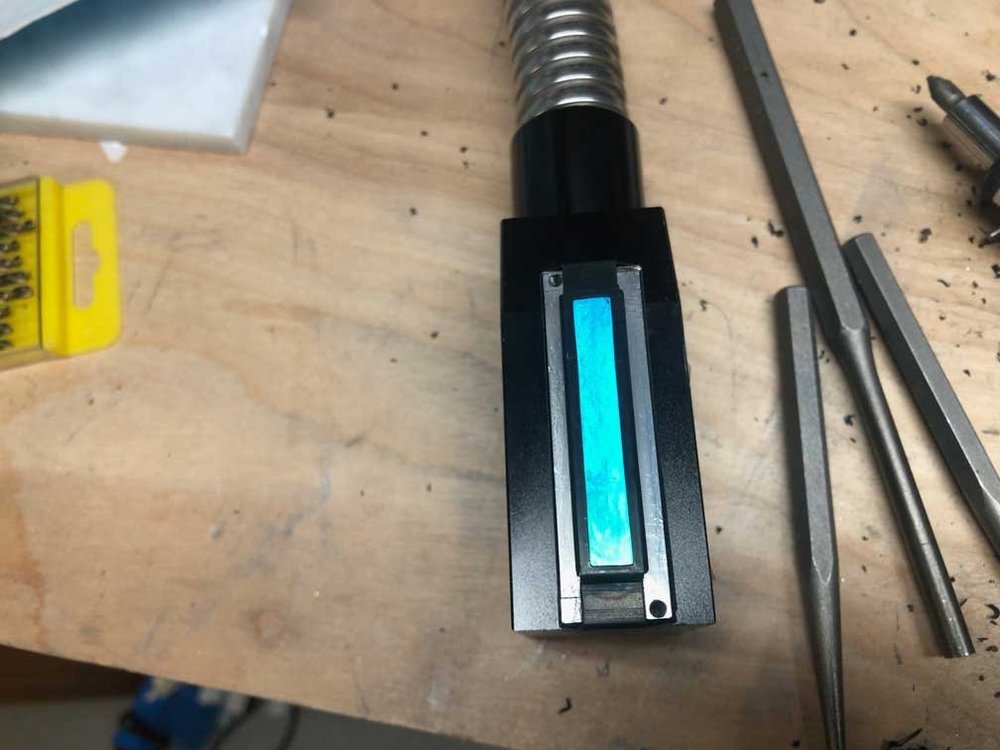
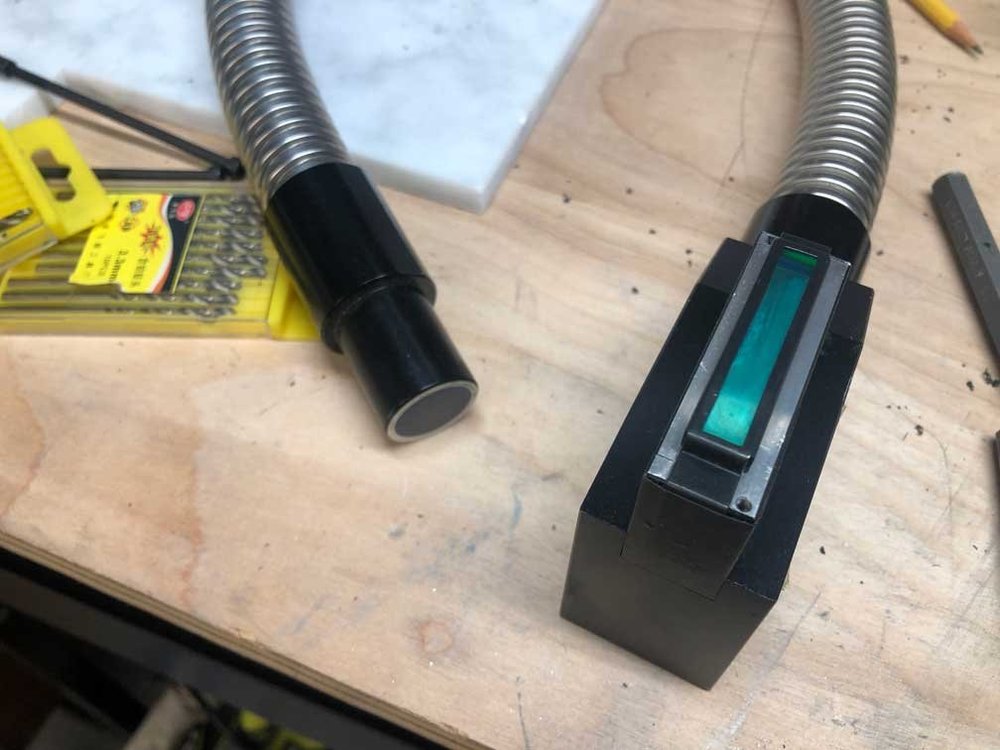
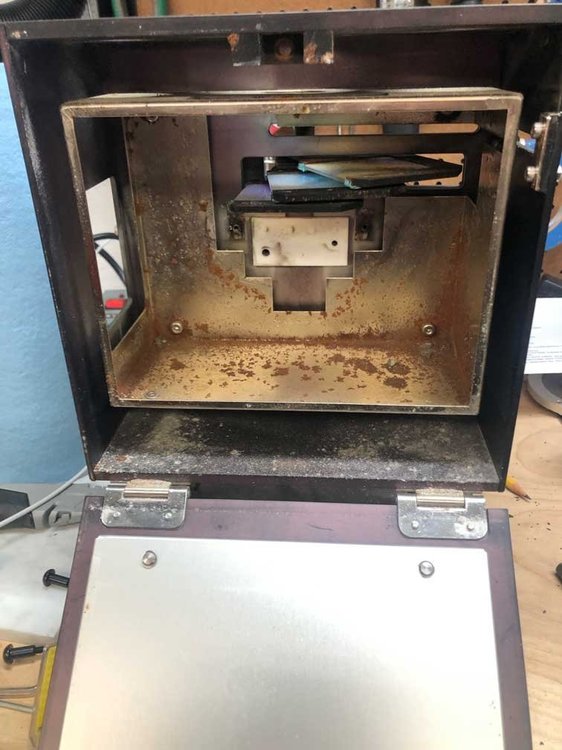
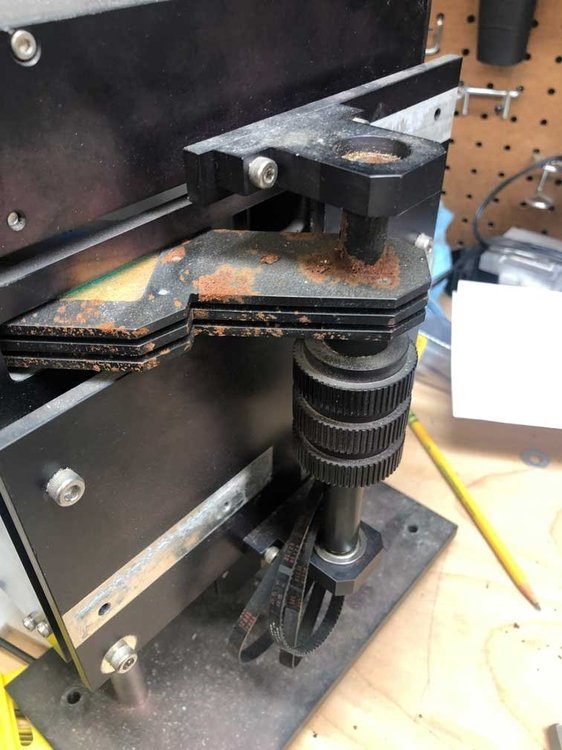

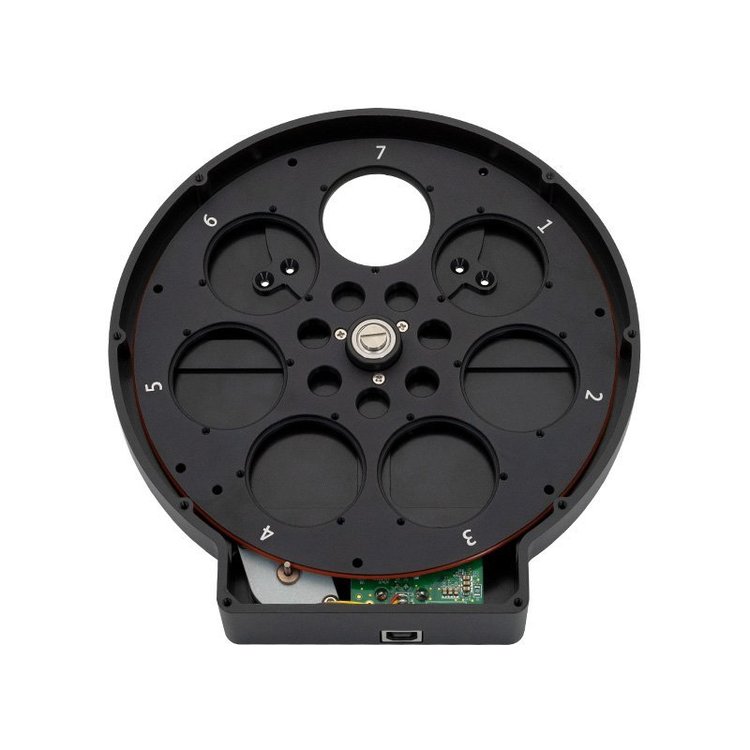
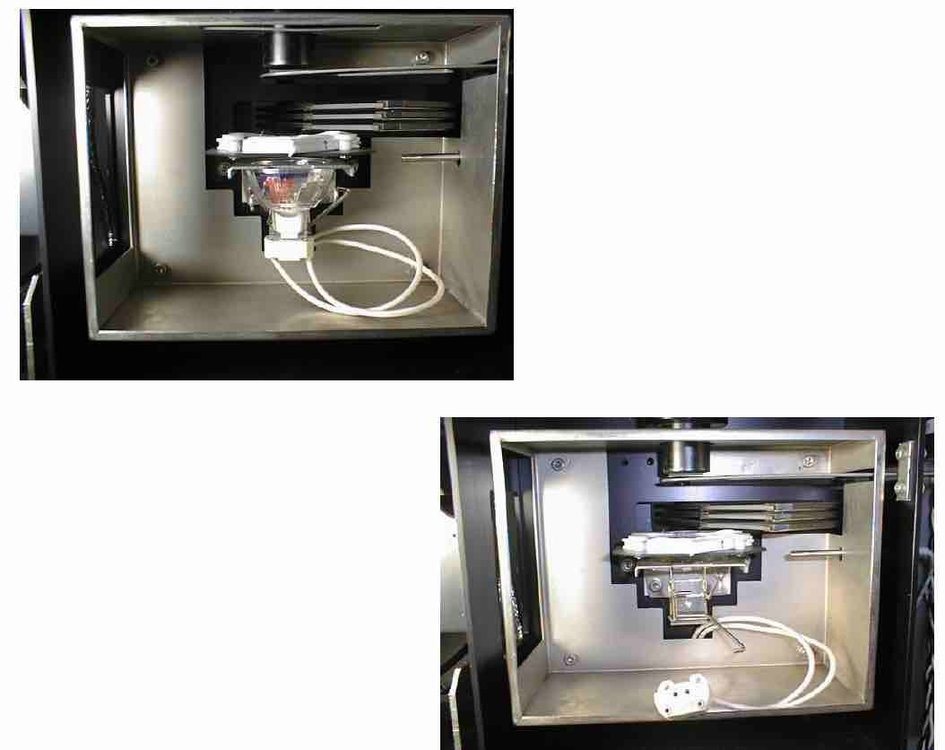
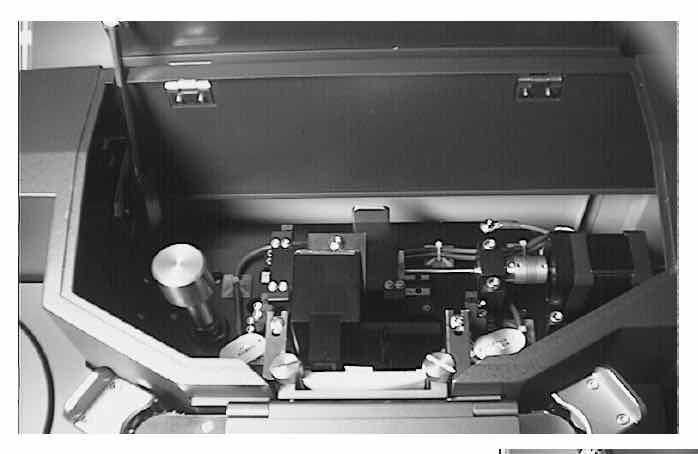
A Lasergraphics Director scanner on eBay $145K
in Post Production
Posted
This is a very different machine than a Scanstation. Apples to oranges here. Even though this is older, it's a very good machine, and frankly I think not a bad price at $100k.
It is 100% reasonable for a company that makes such a complex machine to want to do a diagnostic check on it before they're willing to give you a warranty. A warranty is a legally binding agreement, where they'll be on the hook to repair something that breaks. What if something is completely messed up due to someone tinkering with it? or if a part is irreparably damaged and will need replacement? Also because we're talking about a mechanical system, this may involve sending someone to check it out in person. I honestly don't see an issue with that fee.
As for the annual support contract fee (the warranty fee mentioned in the listing), I'm not sure how many times this needs to be discussed here, but it is what it is and it's in line with the industry standard. That warranty covers both technical support and software updates, as well as discounted replacement parts should something fail.
Another thing to keep in mind - given the global supply chain issues and especially semiconductor shortages, it would be no surprise if any fixes or replacement parts had to be custom made using newer parts that are no longer available. I know quite a few folks who do hardware design, who have had to completely redesign boards around what's currently available. And that's changing day by day.